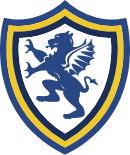History
The origin of St Piran's was in 1805 at a small school, the Revd John Potticary's school in Blackheath, at 2–3 Eliot Place. [1] After moving to its present location in 1872, it operated as a boys' boarding school under the name of Cordwalles School until 1919. [2] Up to this time, it was among a group of preparatory schools – which included Stubbington House School and Eastman's Royal Naval Academy – that maintained strong connections with the Royal Navy. [3] In that year, 1919, the school was bought by Major Vernon Seymour Bryant who renamed it St Piran's. It reopened in 1920 with 23 boys, increasing to 65 the following year. [2]
After becoming an educational trust in 1972, the school became co-educational in 1993, and boarding ended the same year. [2] In 2005, St. Piran's celebrated its 200th anniversary with a bicentennial pageant. In 2008 a new geography room and lower school hall were completed.
This page is based on this
Wikipedia article Text is available under the
CC BY-SA 4.0 license; additional terms may apply.
Images, videos and audio are available under their respective licenses.

